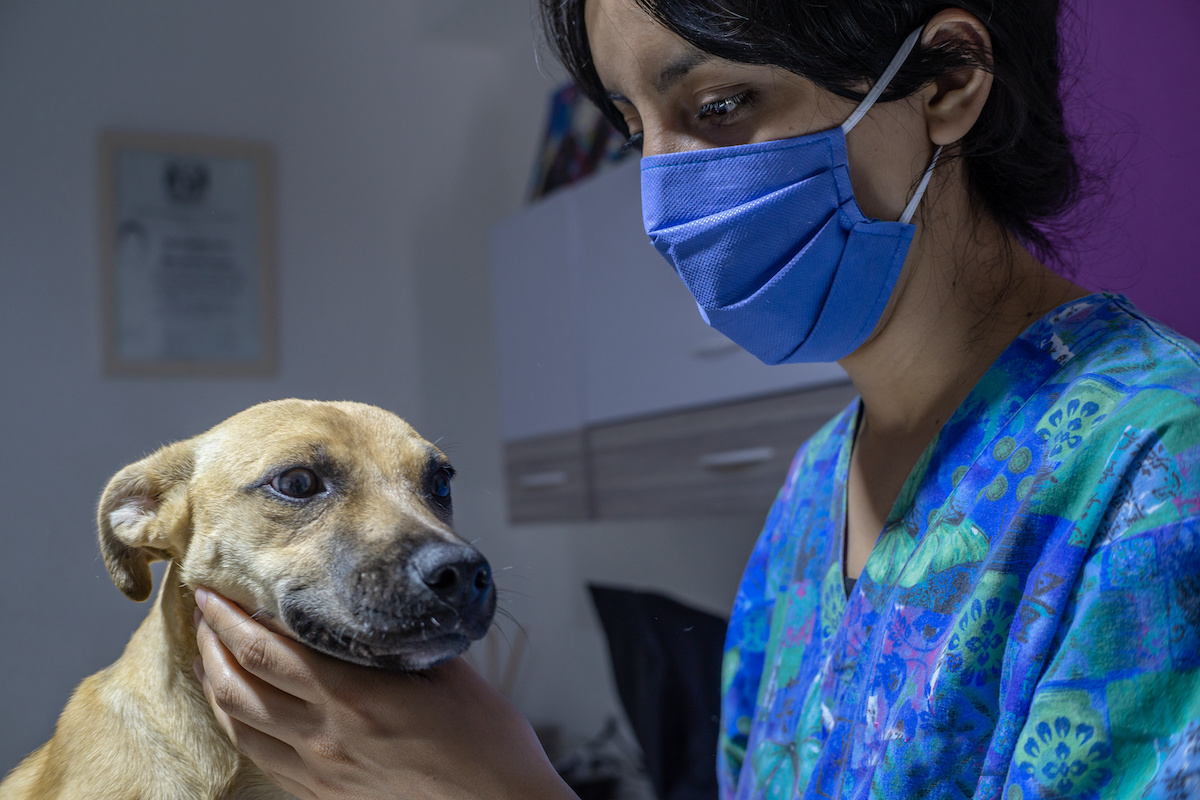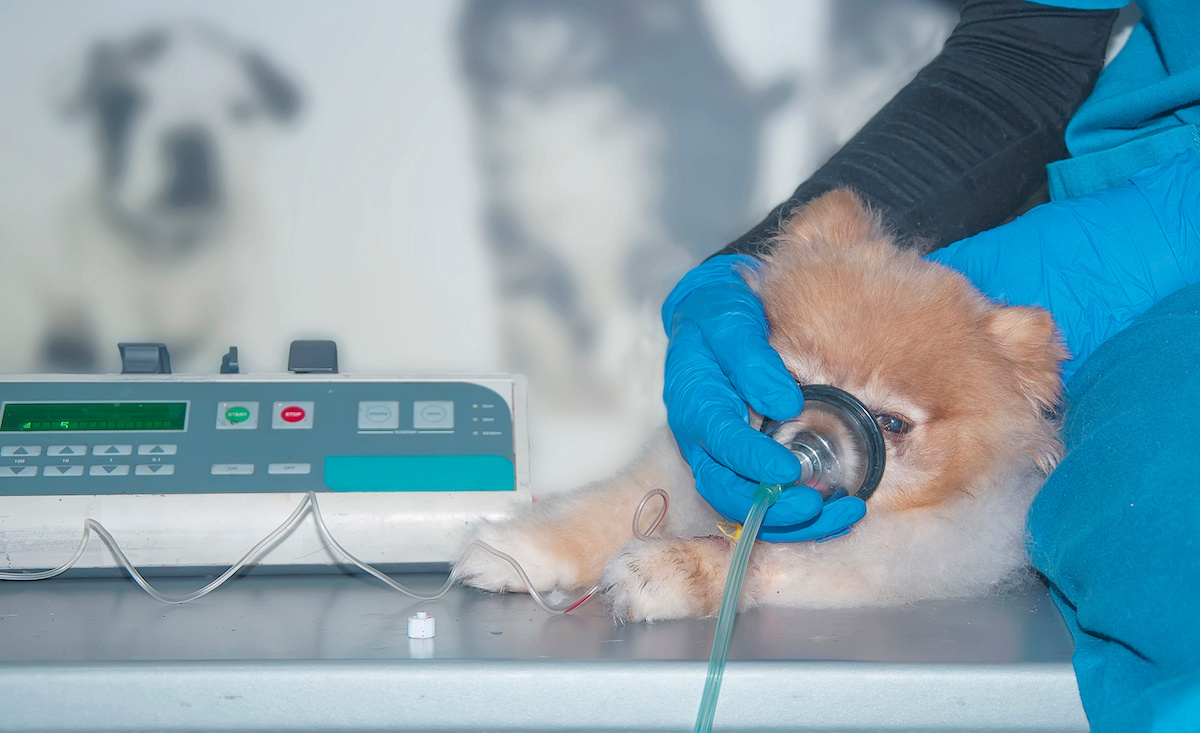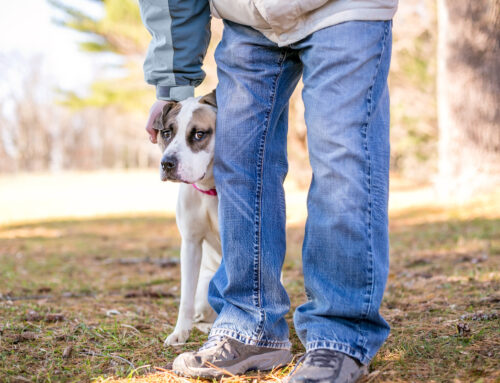If you have a dog, you understand that they are more than just a pet. They really are “man’s best friend” and it doesn’t take long for them to become part of the family. But you need to pay special attention to symptoms that point to collapsing trachea, as this can be a life-threatening condition.
Read on to learn what collapsing trachea in dogs is, how you can recognize the symptoms and what to do if it develops in your pooch.
What is a Collapsing Trachea?
Collapsing trachea is a serious condition that affects countless dogs every year. Though it most often occurs in older, small breeds such as Pomeranians, Terriers, and Pugs, it can happen to any dog regardless of size or age.
The trachea, or windpipe, relies on flexible rings of cartilage to keep it open for the air to pass through. When these rings become weakened, it allows the trachea to flatten whenever your dog inhales.
In the early stages of collapse, known as grade 1, this is an uncomfortable annoyance. But if left untreated the condition can progress to grade 4 where breathing becomes very difficult or even impossible.
Causes of Collapsing Trachea
The cause of a collapsing trachea in dogs is generally unknown, but there are theories. In many cases it is believed to be a congenital condition, meaning the dog may have been born with weakened cartilage in its throat. Small breeds are more at risk of having the genetic component.
In other cases, an injury or illness such as heart disease, a tracheal tumor, or obesity may play a role.
Since collapsing trachea is a progressive disease, symptoms don’t usually develop until the dog is at least 6-7 years old.
Symptoms of Collapsing Trachea
The most common symptom of a collapsing trachea in dogs is chronic episodes of coughing that last a few minutes before resolving by itself. Dogs with a tracheal collapse have a very distinct sounding dry cough, it’s often described as sounding like a goose honk.
Other symptoms to watch out for include:
- Wheezing or difficulty breathing
- Low energy
- Rapid breathing or panting
- Bluish gums
- Fainting
- Vomiting or gagging from coughing
Symptoms of collapsing trachea may be worse at night, when your dog is excited, or immediately after eating and drinking. Humid weather, smoke inhalation, and pressure on the throat from a collar may also trigger coughing fits.
If the trachea is completely blocked, your dog may develop signs of being in severe pain. They may be restless, have difficulty swallowing, rapid breathing, or show signs of general respiratory distress. If you notice any of these signs, it is important to seek medical attention immediately.

Can Collapsing Trachea Be Treated?
There is no cure for collapsing trachea in dogs, but it can be treated to make your dog more comfortable and prevent it from progressing.
These are some of the most common ways to treat collapsing trachea in dogs:
Cough Suppressants
If you have a dog with collapsing trachea, cough suppressants can be a good choice because they reduce swelling and inflammation. This slows the progression of the disease. The most common type of cough suppressant is an antihistamine, such as Benadryl. Other drugs that can help with the tracheal collapse in dogs include corticosteroids and bronchodilators. All of these options should be used with caution because they can lead to increased airway resistance and breathing problems in some cases.
Please do not give your dog any type of cough suppressant before you get advice from a veterinarian.
Bronchodilators
Another option includes bronchodilators, also known as beta-2 agonists, are one of the most common medications given to dogs with tracheal collapse. They work by relaxing the muscles in the airways, which allow easier breathing.
Some dogs may respond well to bronchodilators right away, while others may need to take them for a few weeks or even months before they start seeing results.
If you’re still unsure whether your dog is suffering from tracheal collapse or not, you can always consult your veterinarian, who will be able to diagnose it based on the symptoms your pet is exhibiting.
Corticosteroids
What are corticosteroids? This is a class of anti-inflammatory drugs that reduce swelling and inflammation. Corticosteroids can be used to treat some types of tracheal collapse in dogs. This is including those due to trauma, severe lung disease, or other conditions.
Although corticosteroid injections can work well in some cases, they may not be an effective treatment for all types of tracheal collapse. If your dog has tracheal collapse due to chronic lung disease, you may be better off using other treatments.
Your veterinarian can explain the pros and cons of using corticosteroids to treat tracheal collapse in dogs. It is important to realize that corticosteroids have risks and side effects, so you must work closely with your veterinarian to determine the best course of action for your dog.
Sedatives
When some dogs become overexcited, this can aggravate the condition of tracheal collapse. Sedatives will help relax your dog and loosen the muscles within the airways, allowing them to breathe better.
Tips to Help Your Dog with Collapsing Trachea
While a visit to the veterinarian is important for collapsing trachea, there are other ways that you can help your pup feel better.
– Make sure your dog has been examined by a vet, who will be able to confirm if they have collapsed trachea. Other ailments such as heart disease may have similar symptoms and should be ruled out. If you notice any breathing problems, or if your dog is struggling to breathe, take them to the vet immediately.
– Does your dog wear a collar? Try switching to a harness. Collars put direct pressure on your dog’s windpipe which can make breathing more difficult.
– Avoid exposing your dog to cigarette smoke or other airborne irritants which are known to aggravate symptoms of tracheal collapse.
– Change the air filter in your home frequently. Not only can this help reduce symptoms, but it may help those who suffer from allergies in your family.
-Check with your vet to ensure that your dog’s weight falls within a healthy range. Obesity can aggravate symptoms of tracheal collapse. Losing weight can help your dog breathe easier.
Help Your Dog Lose Weight
Obesity is one reason why dogs may develop collapsing trachea. The best way to help your dog lose weight is to encourage exercise. Exercise burns calories and can help reduce the amount of food that your dog eats, so it’s a great way to help them lose weight.
If you don’t have time to take your dog out for a walk, there are plenty of other ways you can encourage them to get active. A game of fetch will burn as many calories as one or two walks. You could also try playing with your dog at home by setting up an agility course or putting tennis balls in the yard.
There are several different types of weight-loss diets that you can try with your dog, depending on their needs and age. You should always consult with your vet before starting any diet for your dog. They may have different nutritional requirements than humans.
Make sure you’re feeding your dog nutritious food that meets their needs and contains all the nutrients they need for a healthy diet. Feeding them too much or giving them treats that are high in sugar and fat can lead to obesity and health problems like diabetes.
If you are worried about your dog’s weight, please contact us here at Animal Care Center. We can provide ideas and foods that you can purchase for pet weight control.
Get Help with Your Dog’s Tracheal Collapse with Animal Care Center
We understand that collapsing trachea sounds scary (and it is!) but there’s no need to panic. The best way to help a dog with this condition is to catch it early- and that’s where we come in.
If you’ve noticed your dog coughing frequently or you’d just like to schedule a routine exam to keep your pup in tip-top shape, call Animal Care Center to set up an appointment. Our knowledgeable staff is ready to answer any questions you have about tracheal collapse and more. We look forward to hearing from you!






